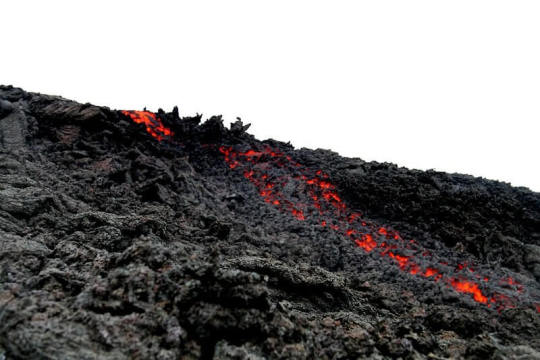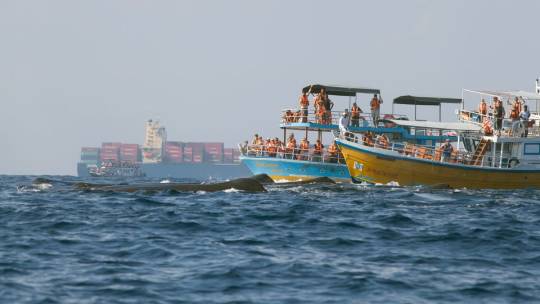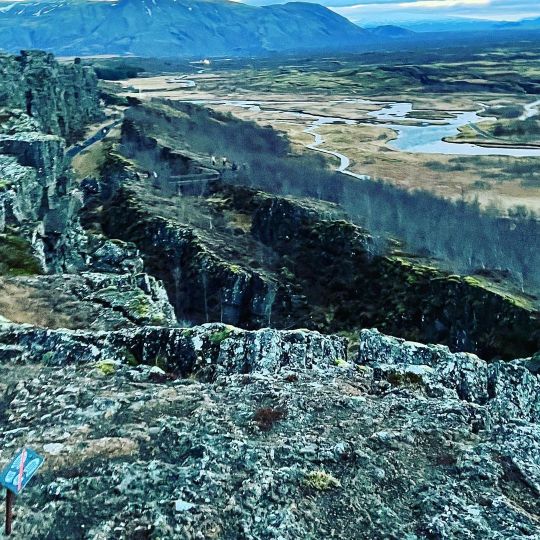#tectonicplates
Text

page 553 - I breathe again and the mountains have changed.
Imperceptibly but definitely.
Time loses meaning in the darkness down here. But still my brain spins and my heart races and it's good to breathe deeply, to slow down and to attempt a better grasp on things.
The air is murky, but there is no food and water only in drips, so a deep breath is the only thing available to fill me up.
#economy#economist#economics#exploitation#discrimination and preferential hiring preferences#discrimination#marginal factor cost#marginal#mountain#mountains#mountain range#rockies#alps#pyrenees#geology#geography#tectonic#plate tectonics#tectonicplates#erosion#mountain life#meadow#photograph#graph#chart
62 notes
·
View notes
Text
Exploring the Mysteries of Magma and Volcanic Eruptions

Introduction
At the heart of the Earth's mantle lies a molten force that has shaped our planet for billions of years - magma. This enigmatic substance, hidden from our view deep within the Earth's mantle, holds a profound significance in understanding geological processes and natural phenomena. From its role in volcanic eruptions to its influence on Earth's tectonic movements, the importance of magma cannot be overstated.
We will embark on a journey into the depths of our planet’s inner workings and uncover how magma serves as both a destructive and creative force, shaping landscapes and ecosystems in ways that are both awe-inspiring and humbling. Through understanding the properties of magma and its behavior beneath the Earth’s surface, we gain insight into predicting volcanic activity, harnessing geothermal energy, and comprehending planetary formation.
In this article, we delve into the captivating world of magma, shedding light on its crucial impact on our planet and why it continues to captivate scientists and researchers around the globe.

Volcanic eruption in Holuhraun, Iceland. Photo by Sparkle Motion. Flickr.
Composition of Magma
Magma is a molten mixture of rock, minerals, and gases found beneath the Earth's surface. When magma flows onto Earth's surface, it is called lava. This hot, semi-fluid material can reach temperatures above 1300°C and contains a variety of chemical compositions, depending on the source rock. Magma and lava contain three components: melt, solids, and volatiles.
The melt is made of ions from minerals that have liquefied. An ion is a particle like an atom that has lost or gained an electron. The solids consist of crystallized minerals that float in the liquid melt. Volatiles are gaseous components—such as water vapor, carbon dioxide, sulphur, and chlorine—dissolved in the magma. The presence and amount of these three components will affect the physical behaviour of magma.
Magma is primarily composed of silicate minerals, along with varying amounts of dissolved gases and other elements. These silicate minerals include compounds such as silica, alumina, iron oxide, magnesium oxide, and calcium oxide, which together determine the physical properties and behavior of different types of magma.

Suspended between the Eurasian and American tectonic plates. Photo by Jason Eppink. Flicker.
The Origins of Magma
Mantle and Crust: Magma's Birthplace
Magma originates in two places: the lower part of Earth’s crust and the upper portion of the mantle. The mantle has two main parts, the upper mantle and the lower mantle. The upper mantle attaches to the layer above, known as the crust, our planet's thin outer layer. Together, they form the lithosphere—a fixed shell divided into tectonic plates.
The Solid Mantle
What most people don’t know is that the mantle consists of solid rock despite its very high temperatures (200C – 4000C ). Although it is solid, the mantle moves. This comes about by mantle convection, which is the very slow creeping motion of Earth's solid silicate mantle as convection currents carry heat from the interior to the planet's surface. It is mantle convection that is the fundamental driver of tectonic plate movement.
Pressure and Temperature: A Delicate Balance
The explanation for this paradox is that the melting temperature of any solid is dependent on both temperature and pressure. The very high pressures inside the mantle raise the melting point of the rock. In the upper mantle, the pressure is 237,000 times more than our atmospheric pressure and in the lower mantle, it is more than three million times greater. Consequently, despite reaching very high temperatures, the rock in the mantle does not melt because the intense pressure prevents bond breakdown between particles.

Alaska’s Pavlof Volcano. NASA’s View from Space. Photo by NASA. Flickr.
Generating Magma
Special Conditions for Magma Formation
Magmas do not form everywhere beneath the earth's surface, so special circumstances are necessary. Magma forms through three mechanisms: raising the temperature of mantle rock above the melting point, lowering the melting point by reducing pressure (a physical mechanism), or adding a flux (a chemical mechanism). These special events occur at mid-oceanic ridges (divergent plate boundaries), hotspots, and subduction zones (convergent plate boundaries) and we shall now consider these individually.
Geological Settings for Magma Formation
Divergent Plate Boundaries
Divergent boundaries, also known as spreading centers, are fascinating geological features where two tectonic plates move away from each other. These boundaries occur primarily along mid-ocean ridges, where new crust is constantly being created as magma rises to the surface and solidifies. The process of seafloor spreading at divergent boundaries results in the formation of geologically young oceanic crust.
Hotspots
With this second mechanism, heat from very deep in the planet creates hotspots which are intensely hot areas that cause the mantle in that area to melt. Magma from partial melting of mantle rocks rises upward through the mantle and may pool at the base of the crust or rise through the crust. These hotspots typically occur far from tectonic plate boundaries, challenging the conventional understanding of volcanic activity. Transforming solid mantle into liquid magma by simply applying heat, is the least common process for generating magma.
Subduction Zones
Subduction zones are dynamic geological environments where one tectonic plate is forcefully pushed beneath another, leading to a host of seismic and volcanic activities. At these convergent plate boundaries, an oceanic tectonic plate subducts beneath a continental plate and this can trigger the formation of deep ocean trenches and explosive volcanoes.

Mount Saint Helens active lava stacks. Photo by Art Tower. Pixabay.
Magma Types and Volcanic Eruptions
Understanding Magma Types
There are three main types of magma: basaltic, andesitic, and rhyolitic. Basaltic magma is the most common type and is associated with shield volcanoes and ocean-floor eruptions. It has low viscosity, meaning it flows easily and can travel long distances before solidifying. This type of magma also tends to erupt at higher temperatures, around 1000-1200°C, resulting in relatively gentle eruptions.
Andesitic magma contains a balance of silica and iron, giving it moderate viscosity. This type of magma often leads to explosive eruptions due to its tendency to trap gas bubbles as it rises through the Earth's crust. If precautions are not taken, nearby communities can face danger from these eruptions.
Finally, rhyolitic magma has the highest silica content, resulting in very high viscosity. Eruptions involving rhyolitic magma can be extremely violent due to the build-up of gas pressure within the viscous lava. The explosive nature of these eruptions often leads to the formation of steep-sided stratovolcanoes such as Mount St Helens in Washington state, USA. Understanding these variations in magma composition provides valuable insights into volcanic activity and helps geologists predict eruptions with greater accuracy.
The Impact of Magma on Volcanic Eruptions
When magma rises towards the surface, it can become trapped in underground chambers, building up pressure until it finally erupts. The characteristics of magma, including its viscosity and gas content, have a direct impact on the type of eruption that occurs. Understanding these dynamics helps scientists predict volcanic activity and mitigate potential disasters.
Recent research has also shown that monitoring changes in magma composition before an eruption may offer valuable insights into its behavior. By studying these patterns, scientists aim to develop better early warning systems for impending volcanic eruptions. This prospect is particularly promising in regions, like Iceland, where volcanic activity poses a significant threat to local communities and infrastructure.
Conclusion
Through advancements in technology and research, scientists have made great strides in unraveling the mysteries of magma's behavior and composition. They have shown that magma forms deep beneath the Earth's surface through the process of partial melting of the mantle. When temperatures in the mantle rise, they can cause rocks to partially melt, forming liquid magma. This often occurs at tectonic plate boundaries, where subduction or spreading causes intense heat and pressure, leading to the formation of magma chambers.
Additionally, hot spots, such as those found at Yellowstone National Park or Hawaii, can also produce magma as rising plumes of mantle material reach shallower depths. As we have seen, the composition of magma is a complex interplay of various elements, including silica, oxygen, and diverse minerals. Research has shown that there are three main types of magma - basaltic, andesitic, and rhyolitic - each with distinct compositions and characteristics that influence volcanic eruptions.
The process of convection within the mantle also plays a crucial role in generating the heat necessary for magma formation. Understanding how and where magma forms offers valuable insights into Earth's geological processes and has significant implications for volcanic activity prediction and hazard mitigation efforts.
Finally, we now understand that magma ascends to the surface at mid-oceanic ridges and cools to form oceanic crust. Millions of years later, tectonic processes return this crust to the mantle at subduction zones. The formation of oceanic crust constantly occurs as magma flowing from our planet’s interior returns to the mantle, thus resurfacing about two-thirds of the Earth every 100 million years.
Sources: THX News, European Geosciences Union, Nature Geoscience, PubMed & Web of Science.
Read the full article
0 notes
Text
#earthquakeblogs#earthquakephilippines#earthquakePH#philippinetectonicplates#tectonicplates#thebigone#westvalleyfault#pacificringoffire#earthquakebelt
0 notes
Text
youtube
This was a short animation I made for a project in my AICE Marine class this year. Features the voices of myself and my good friend Landon
#science#convergent boundaries#tectonicplates#youtube#youtube video#youtube videos#art#animation#short#funny#voice acting
0 notes
Photo

The split of the African plate could gift six landlocked countries a coastline
Africa is gradually splitting into two. The Somali and the Nubian tectonic plates are slowly disintegrating from each other, while the Arabian plate continues to pull away.Read more...
https://qz.com/these-six-countries-will-have-a-coastline-if-africa-spl-1850218248
#africanplate#greatriftvalley#somaliplate#geographyofafrica#eastafricanrift#geology#continents#geologyofafrica#geologyofethiopia#tectonicplates#eastafrica#africa#Faustine Ngila#Quartz
0 notes
Link
Writer of creative non fiction who travels and lives her best life
0 notes
Photo

Thank you @voyagelamag for featuring us in your local stories ! You can checkout the full article here 👉 http://voyagela.com/interview/life-work-with-jason-kennedy-of-ontario-california/ #slanderus #slanderized #voyagela #voyagelamag #lifeandwork #jasonjkennedy #losangeles #localbands #localstories #progressivemetal #heavymetal #forevermetal #absorbinginfinity #tectonicplates #cobrakai #findyourlifeline #omen #espiritu #asmallsacrifice #absolution #newalbum #distrokid #supportlocalmusic #metalband #metalmusic #toinfinityandbeyond #supportlocalbands (at Los Angeles, California) https://www.instagram.com/p/Coa5tXgJBCQ/?igshid=NGJjMDIxMWI=
#slanderus#slanderized#voyagela#voyagelamag#lifeandwork#jasonjkennedy#losangeles#localbands#localstories#progressivemetal#heavymetal#forevermetal#absorbinginfinity#tectonicplates#cobrakai#findyourlifeline#omen#espiritu#asmallsacrifice#absolution#newalbum#distrokid#supportlocalmusic#metalband#metalmusic#toinfinityandbeyond#supportlocalbands
0 notes
Photo

Standing on the North American plate looking toward the European plate… #tectonicplates #icelandroadtrip #icelandscape #authorontheloose (at Eurasian/north American Tectonic Plate Rift) https://www.instagram.com/p/Ck5Y_kCIkTo/?igshid=NGJjMDIxMWI=
0 notes
Photo

#tectonicplates #Iceland https://www.instagram.com/p/CjoHUiPskH9/?igshid=NGJjMDIxMWI=
0 notes
Photo

#436 Tectonic Plates from One by Dubstar, 2018 #dubstar #tectonicplates #one #musicilove #songaday #0523 https://www.instagram.com/p/Cd6qULwsAGC/?igshid=NGJjMDIxMWI=
0 notes
Text

3/19/24 — Open 6-9p Mask recommended. No open drinks, please.
Plenty of #Eclipse conspiracy theories around. Mine is... What if #PolarIce was "glue" holding Earth's #TectonicPlates together? Now, the climate-weakend "glue" allows #GraviticForce of #Lunar / #Solar alignment to pull the planet apart!
Or... #Vampires will emerge during #Totality, taking advantage of our assembled masses – craned necks exposed as we focus all attention skyward.
#BonnettsBooks#DaytonOhio#WritingPrompt#usedbookstore#brickandmortar#daytonoh#dayton#vintagepaperbacks
0 notes
Text

Indian scientists have unraveled the mystery behind the giant "gravity hole" in the Indian Ocean. Known as the Indian Ocean geoid low (IOGL), it is Earth's most significant gravitational anomaly, resulting in a sea level 106 meters lower than the global average. By reconstructing plate tectonic movements and running computer simulations, scientists from the Indian Institute of Science (IISc) traced the origin of this unique feature. Sinking tectonic plates beneath Africa generated plumes under the Indian Ocean, shaping the IOGL. This discovery provides insights into Earth's geology and gravitational forces. #IndianScientists #GravityHole #IOGL #TectonicPlates #GeologicalDiscovery Read more at: https://ctznsnews.blogspot.com/2023/07/indian-scientists-uncover-origins-of.html #capitanstudios #zinkmagmore #peterrounaldgomes
0 notes
Video
youtube
PLACAS TECTÔNICAS NÃO SÃO NECESSÁRIAS PARA O SURGIMENTO DA VIDA
BAIXE O NOVO SPACE TODAY+ NO SEU CELULAR E FIQUE CONECTADO COM O UNIVERSO! É GRÁTIS! https://www.spacetodayplus.com.br Cientistas fizeram uma viagem no tempo para desvendar os mistérios do início da história da Terra, usando minúsculos cristais minerais chamados zircões para estudar placas tectônicas bilhões de anos atrás. A pesquisa lança luz sobre as condições que existiam na Terra primitiva, revelando uma complexa interação entre a crosta terrestre, o núcleo e o surgimento da vida. As placas tectônicas permitem que o calor do interior da Terra escape para a superfície, formando continentes e outras características geológicas necessárias para o surgimento da vida. Consequentemente, "há a suposição de que as placas tectônicas são necessárias para a vida", diz John Tarduno, que leciona no Departamento de Ciências da Terra e do Meio Ambiente da Universidade de Rochester. Mas uma nova pesquisa lança dúvidas sobre essa suposição. Tarduno, o William R. Kenan, Jr. Professor de Geofísica, é o principal autor de um artigo publicado na Nature examinando placas tectônicas de 3,9 bilhões de anos atrás, quando os cientistas acreditam que os primeiros traços de vida apareceram na Terra. Os pesquisadores descobriram que as placas tectônicas móveis não estavam ocorrendo durante esse período. Em vez disso, eles descobriram que a Terra estava liberando calor através do que é conhecido como regime de tampa estagnada. Os resultados indicam que, embora as placas tectônicas sejam um fator chave para sustentar a vida na Terra, não é um requisito para a vida se originar em um planeta semelhante à Terra. “Descobrimos que não havia placas tectônicas quando se pensa que a vida se originou, e que não havia placas tectônicas por centenas de milhões de anos depois”, diz Tarduno. “Nossos dados sugerem que, quando procuramos exoplanetas que abrigam vida, os planetas não precisam necessariamente ter placas tectônicas”. Enquanto a Terra é o único planeta conhecido a experimentar a tectônica de placas, outros planetas, como Vênus, experimentam a tectônica de tampa estagnada, diz Tarduno. “As pessoas tendem a pensar que a tectônica de tampa estagnada não construiria um planeta habitável por causa do que está acontecendo em Vênus”, diz ele. "Vênus não é um lugar muito agradável para se viver: tem uma atmosfera esmagadora de dióxido de carbono e nuvens de ácido sulfúrico. Isso ocorre porque o calor não está sendo removido efetivamente da superfície do planeta." Sem placas tectônicas, a Terra pode ter encontrado um destino semelhante. Enquanto os pesquisadores sugerem que as placas tectônicas podem ter começado na Terra logo após 3,4 bilhões de anos, a comunidade geológica está dividida em uma data específica. FONTE: https://phys.org/news/2023-06-plate-tectonics-required-emergence-life.html #EARTH #LIFE #TECTONICPLATES
0 notes
Photo

Word of the Week
Subduction Zone: an area where two tectonic plates converge such that one plate slides under the other plate.
#wordoftheweek #sciencewords #earthscience #tectonicplates #subductionzone
0 notes
Text
The #Arabian and #Anatolian #TectonicPlates collide - the cause of the devastating #earthquake that took 15,000+ innocent lives in #Syria 🇸🇾 and #Turkiye 🇹🇷 while in their sleep.
0 notes
Photo

More moody landscapes from Iceland. The first pics I edited from the recent trip when it rained every day. All of this series was shot on our second day in Iceland during a tour of the "Golden Circle." #mood #goldencircle #tectonicplates #moodylandscape #landscapes #iceland #landoffireandice #travelphotography #makememories #travelgram #wanderlust #moodygrams #travel_awesome #travelgram #travelbug #instatravel #chrislordnyc #chrislord #pixielatedpixels #nycphotographer #phototour #yourcustomtravels #icelandtravel #travel #icelandtrip #exploreiceland #icelandnature #icelandadventure ©2022 Chris Lord's Pixielated Pixels - So much more to see and\or purchase on my website, link in my Bio, thanks for looking My Main Website https://ift.tt/JqRyNDX Fine Art Prints are available at https://ift.tt/5z4umEK Exclusive Limited Editions at https://ift.tt/uUrHACx In England? Check out https://ift.tt/SPIgLdM — view on Instagram https://ift.tt/BnI2FCa
0 notes